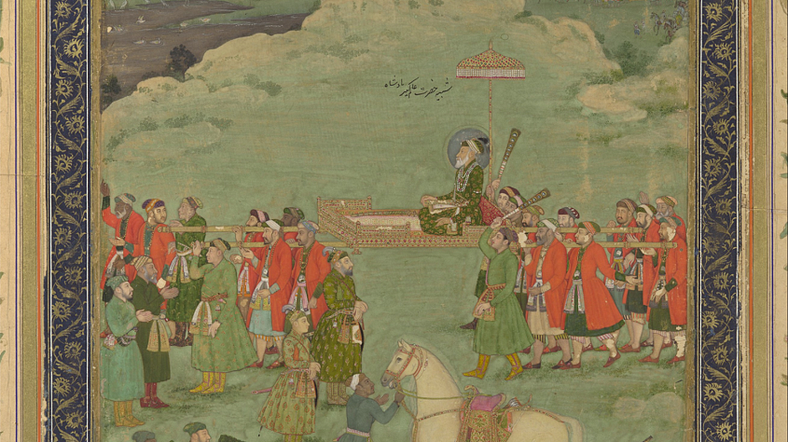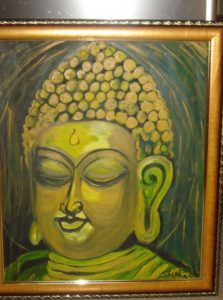The Evolution of Persian Paintings To Miniature Paintings of Moghul Era
A unique Blend of Indian Art, Persian Culture and Islamic Colors
Moghul dynasty which was originated in Northern India in 16th to Mid 18th century was founded by Moghul Emperor Babur (1526–1530), a Central Asian ruler of Turkish-Mongol descent. Let’s go through the evolution of Persian paintings to miniature paintings of Mogul era, to understand the origin of miniature paintings and their extension to Northern India centuries ago.
Moghul Paintings and artists flourished under the reign of Emperor Akbar. Akbari paintings alternative name for Moghul paintings are very illustrative, full of life and describing attire and event details. Also these paintings are in the form of book illustration with collections of miniature paintings about the events and preserved in “Akbarnama”.

Origin and extension of Moghul Paintings in Moghul Empire
Babur or Zahir-ud- Din-Muhammad , founder of Moghul Empire and first Emperor of Moghul Dynasty in Indian Subcontinent was succeeded by Humanyu, Babur’s first and favorite son.
Humanyu or Nasir-ud-Din-Muhammad (1530–1556), second Emperor of Mughal Empire who ruled over territory, now known as Afghanistan, Pakistan, Northern India and Bangladesh.
When Humanyu was on exile in Persia he was exposed to Persian miniature painting. He commissioned one painting “Princes of the House of Timur” present in British Museum now. He brought two accomplished Persian artists to India “Abd-al-Samad” and “Mir Sayyid Ali”
Humanyu’s major commission was Khamsa of Nizami, which is collection of 36 illuminated pages with art styles of various artists. He also commissioned two miniature paintings showing himself with family members this art subject was rare in Persia though exclusive for Moghuls.
Akbar or Jalal-ud-Din Muhammad (1556–1605) succeeded his father Humanyu and became third Mughal Emperor and expanded his empire in India. He consolidated regions and and was inclusive of diverse religions in India.
Some of the prominent painters in Akbar The Great, reign were Hindu artists Govardhan, Basawan, Daswanth. He also hired more than 100 artists to practice Moghul Style Paintings, gave patronage to painters and also established a “Tasvir Khana” a “Painting Factory” to practice art.

Akbar with his new mindset encouraged artists and painters to be more illustrative in their paintings include lavish courts and palaces , elephants, clothing, jewelry and richness to praise Moghul Empire. He also encouraged them to write down and record in different ways greatness of Moghul Empire.
Jahangir or Nur-ud-Din-Mohammad (1605–1627) was fourth Moghul Emperor who also had artistic inclination and extended Moghul paintings in his Empire. He was influenced by European painting, Art improved further brushes became finer and colors became much lighter in miniature paintings. Miniature paintings included birds, flowers, animals and life events and individual portraits.

Shah Jahan or Shahab-ud-Din-Mohammad Khurram (1628–1658), fifth Moghul Emperor , under his reign Empire reached at its peak of cultural glory. The ardent fan of art he constructed Taj Mahal, Moti Masjid (Mosque), Jama Masjid and Red Fort in New Delhi. Shah Jahan Miniature paintings and Portraits are preserved in very famous art museums.

Aurangzeb or Muhi-ud-Din-Mohammad (1658–1707) Sixth and last of Moghul Emperor was fierce and powerful emperor who extended Moghul empire further.

Art style and themes however changed completely. Instead of lavish paintings and portraits of Shah Jahan era, portraiture simplified and settings and themes were understated and more of a battle fields and warriors depicted battles in miniature paintings.
Blend of Persian and Indian Art
Miniature Moghul Paintings emerged from Persian Paintings which itself were part of Chinese origin paintings and developed further in Moghul courts . These paintings consolidated Islamic art and culture and credited with spreading Islamic faith, religion and culture in India.
Animals, birds, flowers, battle field, wild hunting scenes, court scenes, and individual portraits were common themes. Rich bright colors with decorated and intricate border designs framing the central design were common. This style of miniature paintings later spread to other Hindu, Muslim and Sikh courts of India depicting their life events and themes.

Miniature Paintings in Current World
Miniature paintings are still being created by artists in Lahore. Many are skillful copies of originals with variations. Many artists are recreating the same art of that era under their names. These miniatures artforms are sold with variations of wood frames, antique and unique designs and decorative items, fashion clothing and tapestries. Miniature Moghul era art designs and portraits are bought by art lovers under handicraft fairs in Old and New Delhi regions.
Dec 18, 2021·4 min read

Share Your Thoughts